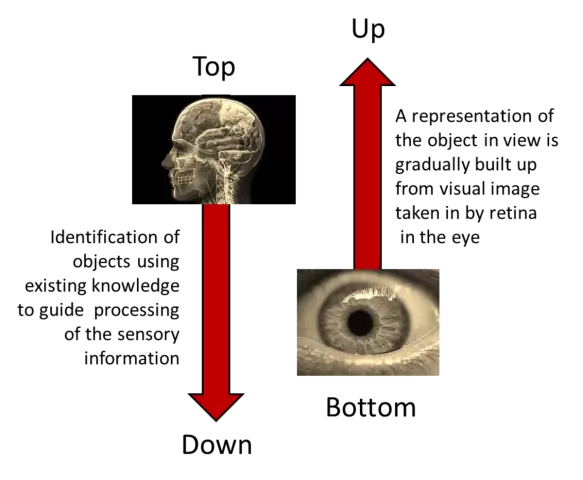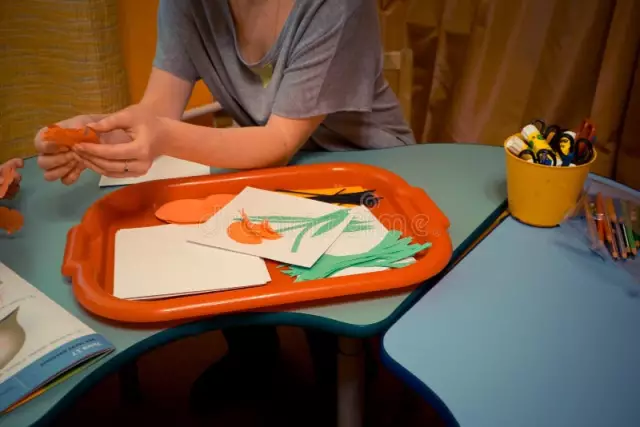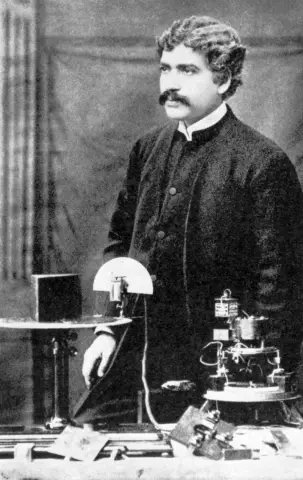- Author Rachel Wainwright [email protected].
- Public 2023-12-15 07:39.
- Last modified 2025-11-02 20:14.
Features of perception in children
The perception of the world by children differs from the adult vision primarily not in the absence of life experience, but in the necessary skills and knowledge.
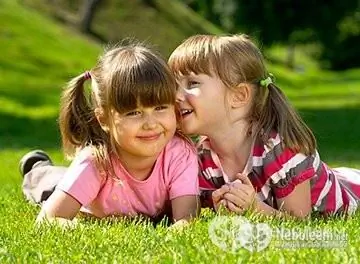
That is why for their upbringing, development and training, it is necessary to use various methods that will help to navigate not only in material life, but will also focus on artistic and aesthetic development.
In the learning process, parents and teachers should take into account the peculiarities of children's perception of form, color, time, music, which will contribute to the holistic development of the personality.
Features of children's perception of color
In the period of early and early childhood, when all the child's attention is directed to learning new things, interest in paints is due to a greater extent to the ability to make bright color spots on a sheet of paper. At the initial stage and when getting acquainted with artistic possibilities, many children do not associate color with emotions and mood. Even before the child can hold the brush in his hands, he makes his first drawings with his fingers or palms.
At this time, it is necessary, taking into account the peculiarities of children's perception of color, to draw the child's attention to the artistic possibilities of the color range to express their own feelings and emotions. Young children are especially attracted to bright and clear colors. This is due to children's perception of the world that surrounds him, the peculiarities of figurative thinking and emotional sphere. The first associations usually arise when the entire leaf is stained, which is perceived as an integral image, as well as color spots and their shapes.
As they grow up, children's perception of color changes, as does the drawing process itself, which indicates figurative and semantic activity. Gradually, a typical association is consolidated behind each color, which in practice is expressed in the ability to use the palette.
With the development of children's perception of the world, the ability to recognize and name colors can be used to assimilate new information aimed at understanding the world around them. Gradually, the perception of color instead of "beautiful - not beautiful" and "like - not like" should change to the formation of skills and ability to express emotions, thoughts and feelings through art.
Features of children's perception of music
Musical perception is a complex process in which the beauty of harmonies and sensory sensations of musical sounds are intertwined. Music gives rise to living associations connecting the accumulated life experience, fantasy and events taking place at the moment. Children's perception of music depends largely on family upbringing and social environment. If a child is surrounded by harmonious music since childhood, his musical images will be bright, and his reaction will be quite lively.
The perception of music by some children, due to the inherent characteristics, occurs naturally, but in most cases it is necessary to develop the ability to hear melody and harmony, which occurs due to the activation of musical thinking.
Vocal and instrumental music is usually used to develop musical taste in kindergartens and schools. At the same time, the vocal form of sounding is the closest and most understandable to young children. Instrumental music is more difficult to perceive, but through it children can learn the world of artistic images. Acquaintance with music provides for its holistic perception. It includes both the comprehension of mood and the characterization of individual artistic techniques.
The development of children's perception of music is aimed at developing the child's emotions, interests, thinking, imagination and tastes. This is necessary for the formation of the foundations of musical and aesthetic consciousness and musical culture in general. The emotional responsiveness of children to music is closely related to the development of an emotional background and the upbringing of personality traits such as sympathy, responsiveness, empathy and kindness.
Many teachers believe that it is necessary to instill a love of music taking into account the peculiarities of the perception of the sound row in children. The best way to develop interest in music is singing certain themes of a piece of music. Such classes also enrich the "intonation vocabulary" of children, expand the possibilities of musical perception and develop the ability to distinguish between musical directions and styles.
When working with young children on the development of musical perception, listening to a piece is often accompanied by various actions - dance movements, marching or patting to the beat. Also, the development of musical characteristics of perception in children is facilitated by visual-visual representations of a piece of music, for which you can use drawings or visuals. To consolidate visual images, it is possible to conduct didactic games related to the reproduction of means of musical expression - rhythm, pitch of sounds, timbre, dynamics.
An introduction to the world of music in the early stages of development must necessarily take into account the peculiarities of perception in children and be aimed at helping to understand its content and the richness of musical means. This requires:
- Select a musical repertoire, taking into account age and developmental characteristics;
- Use in work singing, musical movements, playing in an orchestra, conducting;
- Combine music studies with other arts studies.
The result of musical lessons should be the formation of a culture of listening in children, the development of auditory observation, emotional empathy and memory.
Features of children's perception of time
When raising children, it is necessary to take into account not only the peculiarities of children's perception of colors and sounds, but also time. Psychologists usually associate the difficulties that arise with the specific features of time as an objective reality, namely, its fluidity, the lack of visual forms and irreversibility.
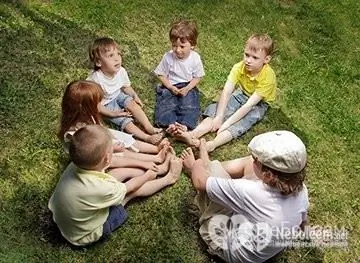
Children's perception of time is formed gradually, since it can be realized only indirectly - through activity, the alternation of any constant phenomena or movement. The difficulty lies in understanding the meaning of words denoting a temporary relationship, for example, "yesterday", "today", "tomorrow", "soon", "long ago." To develop a child's understanding of time, it is best to use rhythmic life processes and their alternation with a state of rest.
As children's perception of the world develops, their ability to evaluate and operate with the time factor also increases. Usually, preschool children are already able to estimate the duration of one minute, but this depends on the nature of their activity at a given time interval. As a rule, children's perception of time is often incomplete and does not cover all concepts, and the positive emotions arising in the process of activity in children, as in adults, cause a desire to prolong the pleasant moment, which makes it difficult to assess the time. The process of forming an idea of time is usually long and requires patience and perseverance from parents and educators.
Found a mistake in the text? Select it and press Ctrl + Enter.

